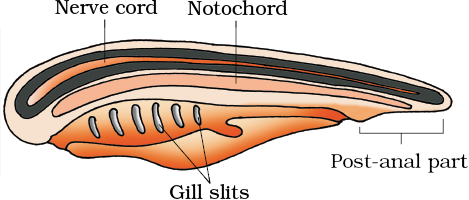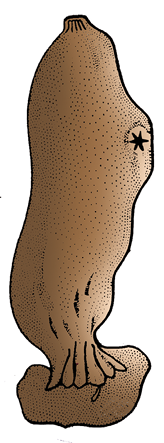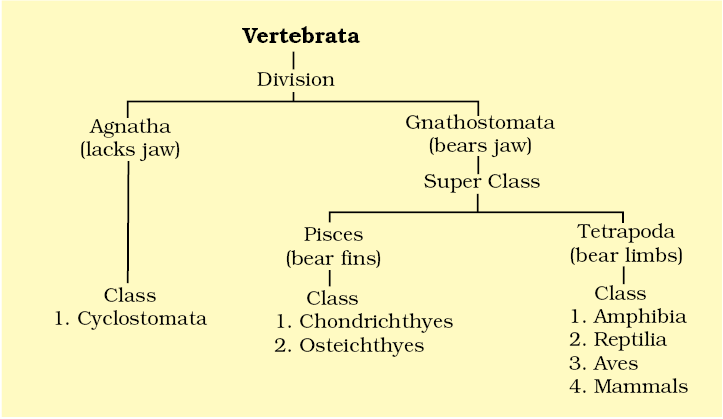Animals belonging to phylum Chordata are fundamentally characterised by the presence of a notochord, a dorsal hollow nerve cord and paired pharyngeal gill slits (Figure 4.16). These are bilaterally symmetrical, triploblastic, coelomate with organ-system level of organisation. They possess a post anal tail and a closed circulatory system.

Figure 4.16 Chordata characteristics
Table 4.1 presents a comparison of salient features of chordates and non-chordates.
Table 4.1 Comparison of Chordates and Non-chordates
Phylum Chordata is divided into three subphyla: Urochordata or Tunicata, Cephalochordata and Vertebrata.


Subphyla Urochordata and Cephalochordata are often referred to as protochordates (Figure 4.17) and are exclusively marine. In Urochordata, notochord is present only in larval tail, while in Cephalochordata, it extends from head to tail region and is persistent throughout their life.
Examples: Urochordata – Ascidia, Salpa, Doliolum; Cephalochordata – Branchiostoma (Amphioxus or Lancelet).
The members of subphylum Vertebrata possess notochord during the embryonic period. The notochord is replaced by a cartilaginous or bony vertebral column in the adult. Thus all vertebrates are chordates but all chordates are not vertebrates. Besides the basic chordate characters, vertebrates have a ventral muscular heart with two, three or four chambers, kidneys for excretion and osmoregulation and paired appendages which may be fins or limbs.
The subphylum Vertebrata is further divided as follows:


© 2025 GoodEd Technologies Pvt. Ltd.
